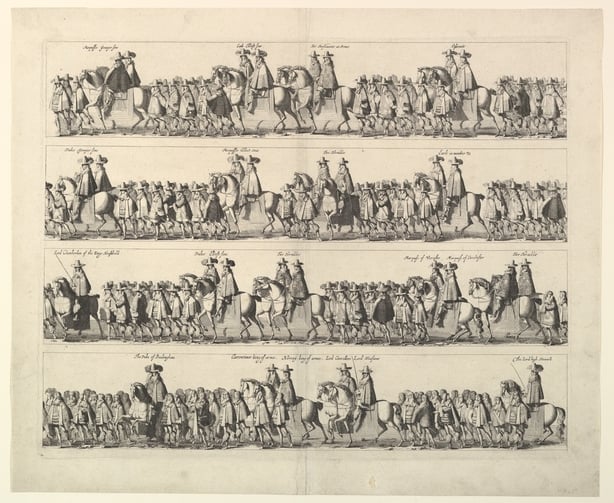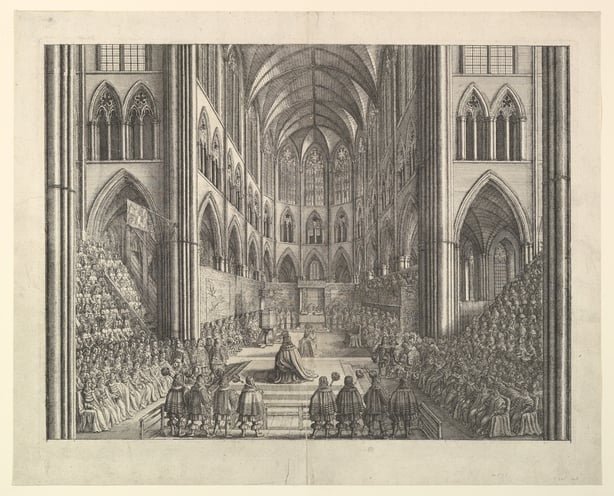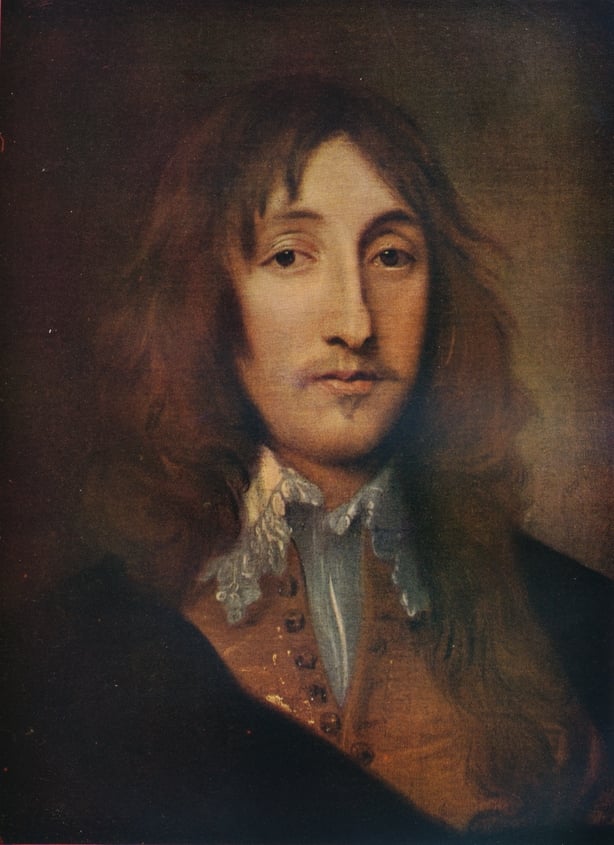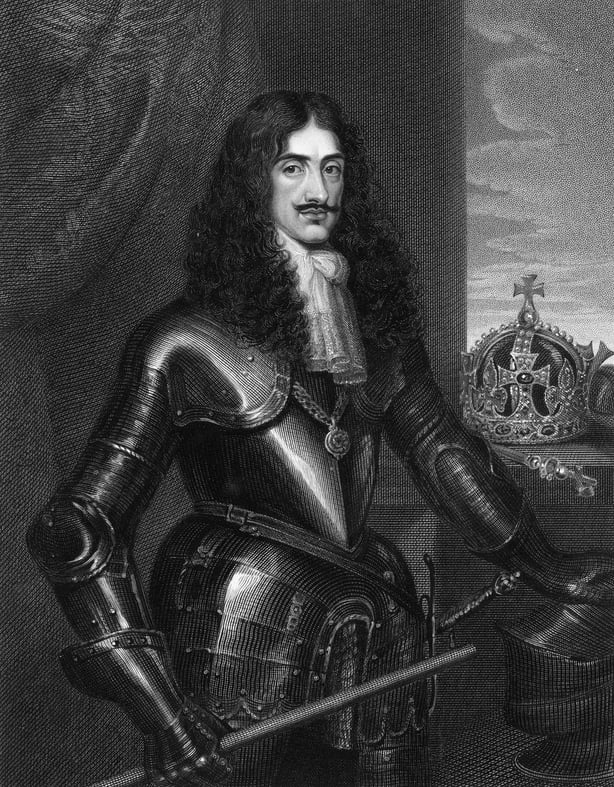Analysis: The 17th century monarch had two coronations and used the ceremony to successfully bolster his public appeal and image
'when I waked I found myself wet with my spewing… Thus did the day end, with joy everywhere'
Although the English coronation of Charles II (1630-1685) in 1661 is generally remembered in a positive light, he experienced a Scottish coronation at the Palace of Scone in 1651. He did not enjoy the experience. An 'on-the-run' king from the English republican regime, he was forced to look to the Scots for help. Their coronation highlight was a vigorous, hour-long sermon on the duties of a good king, and his promise to support the Covenant. This did not appeal to the young king’s pleasure-seeking personality, and the deal subsequently ended in military defeat and the king’s return to the continent.
Ten years later, the king restored on a wave of public jubilation, an English coronation was organised with a focus on legitimacy, authority, and splendour. All was designed to re-assert the role of the monarchy at the heart of the nation, the church, and the constitution. A committee was appointed to research previous coronations and plan for the new one. This included the most prominent Irish noble, James Butler, Duke of Ormond, recently appointed Lord Steward for the occasion.
After a particularly wet spring, weather watchers were greatly encouraged when the sunshine presented itself at right moment. It was seen as being surely a good omen for the future of the monarchy generally, and for the reign of Charles II personally. He was the last monarch to begin his coronation the day before the main event with a procession from the Tower of London to his palace at Whitehall.
We need your consent to load this rte-player contentWe use rte-player to manage extra content that can set cookies on your device and collect data about your activity. Please review their details and accept them to load the content.Manage Preferences
From RTÉ Radio 1's This Week, CNN reporter Alicia Lloyd on changing attitudes to the monarchy ahead of the coronation of King Charles III
The route had been freshly gravelled for the cavalcade (described in detail by the diarist John Evelyn) and it had been festooned with a series of arches, many of them decorated with allegorical motifs relating to the defeat of the commonwealth, represented by Rebellion and Confusion. Richard Boyle, 2nd Earl of Cork, wrote in his diary that ‘The apearance was the most Splendid that has bee[n], I think seen in Christendome; and by the French themselves confest to have excede much the King of Fraunces entrance into Paris’.
On the morning of 23 April (St George’s Day), the king entered Westminster Abbey with nobility, clergy, judiciary and foreign dignitaries in attendance. Ormond, following a spat with Northumberland relating to precedence amongst the nobility, walked directly in front of the king, carrying St Edward’s crown. Most of the regalia had to be recast, the medieval crowns, sceptres and orbs having been melted down or lost during the Interregnum. The king’s magnificent entrance was almost matched by the fashions inside. One commentator opined in relation to the ladies in attendance, that ‘everone dressed as a Queen’, whilst a member of the public rightly wondered where so many ostrich feathers had been sourced at short notice.


There was more to the ceremony than pomp and pageantry. The religious element of the event was symbolised by the anointing of the monarch with holy oil, and formal crowning by the Archbishop of Canterbury. Immediately after this, each peer came before the king, kissing him on the cheek, touching his crown, whilst swearing fealty to him and promising to support his rule with all his power.
It is difficult to over-emphasise the importance of this moment and the impression it made on those gathered. Samuel Pepys, a senior civil servant and nephew of a former chief justice of Ireland, may not have been as overawed as others – as he recorded in his diary, having been in the abbey soon after four in the morning and the ceremony only beginning at eleven, he had ‘so great a lust to pisse’ that he had to leave before the formalities were completed.

After the solemnities in the abbey had come to a conclusion, the king crossed the street to Westminster Hall for a coronation banquet, the location of his father, Charles I’s (1600-1649) trial (after which he was beheaded) two decades earlier, in January 1649. The first course was served to the king by the Duke of Ormond and his colleagues on horseback. Cork described the post-meal rituals, whereby ‘they broght in the Kings champion Dimock armed capa pe on horseback, who threw downe his gauntelet, chalenging any yt denied the title of the King to undoubted. To him his Majesty having drunke in a cup of gold, did send it to him… the cup as a reward.’
Pepys ‘took a great deal of pleasure to go up and down, and look upon the ladies, and to hear the musique of all sorts, but above all, the 24 violins’. Cork’s diary entry for the day ended on a worrying note: despite the positive weather-related omens earlier, ‘The dinner ended, it lightned and thundred excesively, dread.’ Pepys appears not to have been bothered – he thought it ‘foolery, to take too much notice of such things’. His experience of the rest of the evening was recorded in his diary, although it must have been a bit of a blur.

He arrived at the house of Thornbury, the Yeoman of the Wine-Cellar to the King. Having already sent his own wife home to bed with her friend, he, along with Thornbury's 'wife and two of his sisters and some gallant sparks… drank the King’s health and nothing else, till one of the gentleman fell down stark drunk and lay there spewing… no sooner a-bed with Mr Sheply but my head begun to turne and I to vomit… when I waked I found myself wet with my spewing… Thus did the day end, with joy everywhere’.
The better-behaved Earl of Cork spent the following days drawing up his accounts, owing some £359 (the equivalent of 5,128 day’s pay for a skilled tradesman) to his tailors in the City. The estimated cost to the treasury for the celebrations was £30,000.
We need your consent to load this rte-player contentWe use rte-player to manage extra content that can set cookies on your device and collect data about your activity. Please review their details and accept them to load the content.Manage Preferences
From RTÉ Radio 1's Today with Claire Byrne, Royal Historian Professor Kate Williams and Associate Editor for Royal Central Lydia Starbuck on what to expect from King Charles III's coronation
Ultimately the coronation was a tremendous success. The restored king, who played his part magnificently, was formally confirmed in his role through a day that had religious, political, and social elements. Both the political nation and the general public engaged in the process with gusto. Pepys' night of mischief might well have been typical of most Londoners that evening.
Two weeks after the coronation, on the 8 May 1661, parliaments met in all three national capitals in an attempt to hammer out a longer-term settlement. This was to prove to be a task far more difficult and less mirthful than the previous month’s celebrations. Ireland’s was particularly troubled. Whilst his reign had difficulties in all three kingdoms, Charles II saw the value of ceremony and public appeal in successfully bolstering his image and ultimately his kingship.
Read more: The politics of Sinn Féin's at the British royal coronation
It is only a little surprising that some of the coronation gowns were not kept, but instead given to the theatre, perhaps appropriately so considering how much the king valued the theatrics of the coronation. Charles’ coronation suit was worn afterwards in Henry V, in a production by the Irish playwright, Roger Boyle, Earl of Orrery. In no small part because of his charming personality and mostly popular personal appeal, Charles II died at peace, in his own kingdom, unlike his father, Charles I, and brother, James II (1633-1701).
Dr Coleman Dennehy is a criminologist and legal historian who teaches early modern history at Dundalk Institute of Technology. His next publication (with Dr Patrick Little), the six-volume diary of the 2nd Earl of Cork / 1st Earl of Burlington, will be published by the Irish Manuscripts Commission. He is a former Irish Research Council awardee.
The views expressed here are those of the author and do not represent or reflect the views of RTÉ

